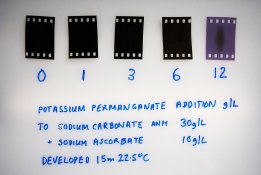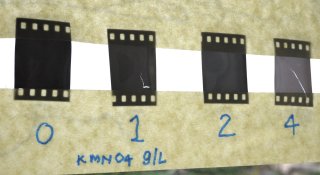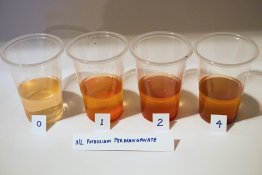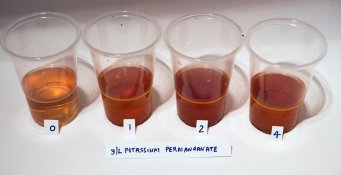I finally found a publication which indirectly mentions interaction between Sulfite and oxidized form of aromatic rings which are fully substituted with -OH groups, just like oxidized Ascorbate. In this text the synthesis of Tetrahydroxy-p-Benzoquinone is described:
So what do we have here? We have the oxidation product of Hexahydroxybenzene, plenty of air to provide further oxidation, and loads of Sulfite, and plenty of time at elevated temperature, yet you get at least 10% of the initial Glyoxal converted to Sodium salt of Tetrahydroxy-p-Benzoquinone. I would therefore suggest, that Ascorbate Sulfonate does not form in quantity from oxidized Ascorbate and Sulfite.
A solution or 400 g (3.17 moles) of anhydrous sodium sulfite and 150 g (1.79 moles) or sodium bicarbonate in 3 liters of water is placed in a 5-liter, three-necked flask fitted with a thermometer, an air inlet tube (1 cm diam), and a tube connected to a water aspirator. The solution is heated to 40 to 45 °C, and 600 g of a 30-percent, aqueous solution or glyoxal (3.1 moles) is added. A brisk stream of air is drawn through the solution for 1 hr without heating after which the mixture is gradually heated to 90 °C. Aeration is then stopped, and the mixture is heated to incipient boiling and cooled to room temperature.
So what do we have here? We have the oxidation product of Hexahydroxybenzene, plenty of air to provide further oxidation, and loads of Sulfite, and plenty of time at elevated temperature, yet you get at least 10% of the initial Glyoxal converted to Sodium salt of Tetrahydroxy-p-Benzoquinone. I would therefore suggest, that Ascorbate Sulfonate does not form in quantity from oxidized Ascorbate and Sulfite.






